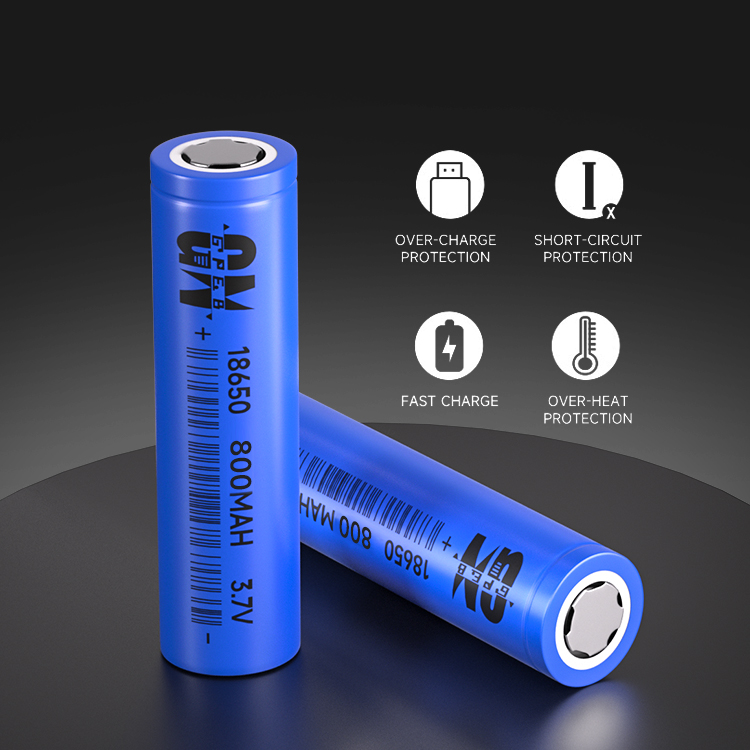

According to foreign media reports, researchers from Argonne National Laboratory collaborated with the Wolverton group at Northwestern University to jointly develop lithium iron oxide rechargeable batteries.
Core Tip: According to foreign media reports, researchers from Argonne National Laboratory collaborated with the Wolverton Group of Northwestern University in the United States to jointly develop lithium iron oxide rechargeable batteries. Compared with common lithium cobalt oxide batteries, the movement of lithium ions is larger. This is due to its larger electric capacity, which extends the battery life of electric vehicles. Through numerical calculations, Wolverton and Yao discovered a new formula whose chemical reaction is reversible. First, the research team replaced cobalt with iron because iron is the cheapest metal element in the chemical periodic table. Subsequently, through calculations, they found the correct balanced ratio of lithium, iron and oxygen ions, so that oxygen ions and iron ions can promote reversible reactions at the same time without causing the release of oxygen.
According to foreign media reports, researchers at Argonne National Laboratory collaborated with the Wolverton group at Northwestern University to jointly develop a lithium iron oxide rechargeable battery (lithium ion iron oxide battery, rechargeablelithium -iron-oxidebattery). Compared with common lithium cobalt oxide batteries (lithium-cobalt-oxide rechargeable batteries, lithium-cobalt-oxide counterpart), the movement of lithium ions is larger. This is due to its larger electric capacity, which extends the battery life of electric vehicles.
The research was supported by the Energy Frontier Research Center project under the U.S. Department of Energy, and its research results were published in Nature Energy. Zhenpeng Yao, a doctoral student in the Wolverton Laboratory and the Argonne Laboratory Postdoctoral researcher ChunZhan is the first author of this research paper. Wolverton and Yao are responsible for computational research and development, while Argonne Laboratory is responsible for the experimental aspects of the research.
During the charging and discharging process of the battery, lithium ions move back and forth between the anode and cathode. When the battery charges, the lithium ions return to the anode and are stored there. The cathode of the battery is made of a composite containing lithium ions, transition metals and oxygen elements.
Typically, cobalt is used as the transition metal, which can efficiently store and release electrical energy when lithium ions move back and forth from the anode to the cathode. The capacitance of the cathode is limited by the number of electrons in the transition metal, which will participate in the chemical reactions within the battery.
Lithium cobalt oxide batteries have been on the market for 20 years, however, often after long-term studies, researchers have discovered another relatively cheap rechargeable battery with a higher capacity. The research team at Wolverton Laboratory improved the performance of ordinary lithium cobalt oxide batteries by using two new strategies: replacing cobalt with iron and forcing oxygen to participate in chemical reactions.
If oxygen can be stored and electrical energy released, the battery capacity will naturally increase and more lithium ions can be stored and utilized. Although other research groups have done similar studies, few have been successful.
Through numerical calculations, Wolverton and Yao discovered a new formula whose chemical reaction is reversible. First, the research team replaced cobalt with iron because iron is the cheapest metal element in the chemical periodic table. Subsequently, through calculations, they found the correct balanced ratio of lithium, iron and oxygen ions, so that oxygen ions and iron ions can promote reversible reactions at the same time without causing the release of oxygen.
More importantly, the battery starts with four lithium ions instead of one, which will increase the battery's capacity. The iron and oxygen will drive the battery to react, allowing four lithium ions to move back and forth between the anode and cathode of the battery.

Popular recommendation
521133 lipo battery.Analysis of the balanced charging principle of lithium-ion battery pack protecti
2023-10-08LR921 battery.Detailed introduction to the principle of mobile phone battery circuit
2023-10-08401030 lipo battery.A design based on a simple battery automatic constant current charging circuit
2023-10-08CR927 battery.Analyze whether OEMs should enter the lithium-ion battery industry from the four dimen
2023-10-08NiMH battery packs.Introduction to vacuum distillation recovery technology of scrap nickel-cadmium b
2023-10-0918650 lithium 3.7 battery.Balancing principle of battery pack in series UPS power supply
2023-10-08li ion 18650 battery pack.What is important about the lithium-ion battery production process?
2023-10-08How to reduce the consumption of platinum metal in fuel power lithium battery
2022-11-04LR03 battery!Can BYD's hybrid technology rival Toyota's?
2023-10-08CR2477 battery.The world's most advanced consumer-grade battery technology is here
2023-10-08Where does the battery come from the electrical
2022-06-1818650 lithium-ion battery.Two major reasons affect the service life of 18650 lithium battery.
2023-10-13